The cinematic moment is the key to enjoying the filmgoing experience. It’s that instance in which the viewer is locked inside a scene, able to escape but unwilling to. A great director keeps the audience captive, but through a willing captivity situation, the filmmaker and the audience members become participants in a game that only they truly understand. It could be a horrifying moment that only one audience member feels or an emotional tangent that hits a nerve in one person rather than the other. Since last year has been spectacular for cinema, with solid films ranging from Lynchian surrealist dreams to emotionally-grabbing prison dramas through psychosexual thrillers and erotic nightmares, I chose a few acting moments that I found influential but also inspirational from last season as my favorites
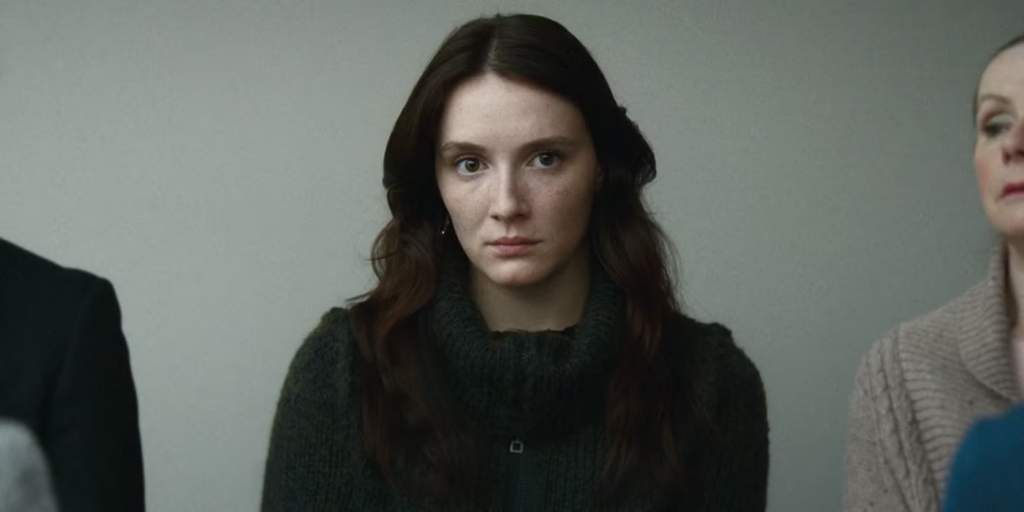
10. Kelly-Anne dresses as the murdered Camille in court – Red Rooms
There’s no film like Red Rooms; the Canadian psychological thriller is a morbid commentary on modern voyeurism but also sheds a spotlight on the psychology of post-social media era voyeurs. In one of the film’s most disturbing scenes, Kelly-Anne (Juliette Gariépy), the main protagonist, a creepy, dark-haired successful model, dresses as one of the serial killer’s victims, the youngest one whose murder video has not been found yet, and her true sinister nature is revealed. Kelly-Anne, the latent voyeur psychopath, unleashes her reality on a horrified world, and connects with the one person with whom her soul vibes the most, the sadistic serial killer as he finally recognizes her. A terrifying scene that Pascal Plante cements in the brain, and what makes it more profound is Gariépy’s unapologetic, chilling performance. It does not make sense but in all its depravity, it’s the culmination of what the film wants to say not only about voyeurism but also about the voyeurs themselves, who are in some way as guilty as the sickening pleasure they find in other people’s crimes.
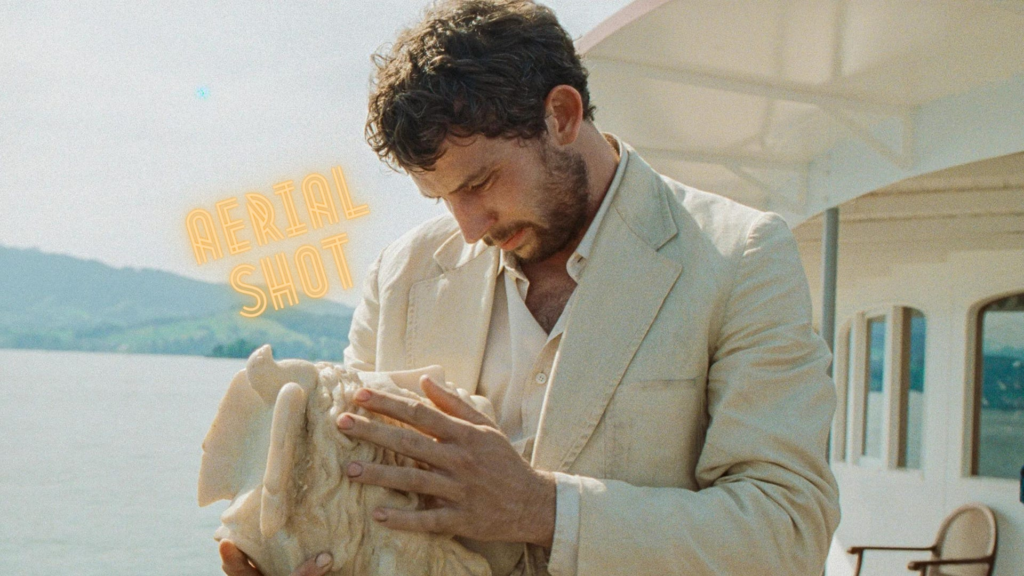
9. Arthur tosses the statue’s head into the ocean – La Chimera
There was probably no more sensitive performance last year than Josh O’Connor’s turn as Arthur in La Chimera, Alice Rohrwacher’s gift to the world, bringing to mind golden age Italian movies of the ‘60s. The way he caresses artifacts, statues, and buried treasure speaks volumes of his character. A man feverish with a love for nonexistent times, mourning a lost love, and having visions of concealed grave goods. In one scene, Arthur’s gang tries to sell the head of the statue of Artume to a greedy art dealer, and as the sale is about to be locked, Arthur carefully touches the head as if breathing life into it or asking it to give him life, then tosses it into the ocean. He’d rather it drown than fall into the wrong “unappreciative” hands, the mindset of a man possessed, and O’Connor perfectly portrays him with a distant look, a haunted expression on his face, and the physicality of a man on the verge of passing out.
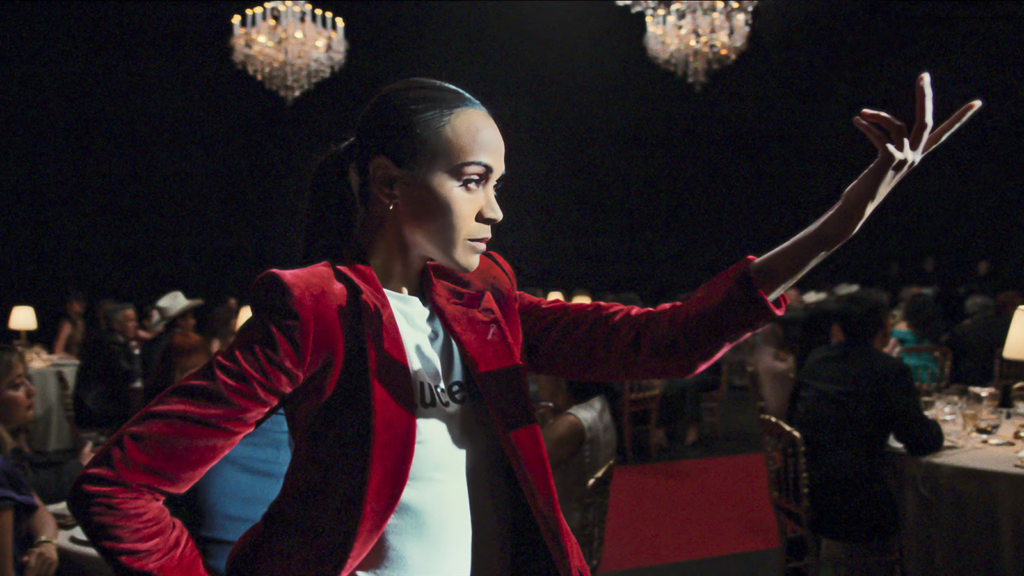
8. Rita confronts corrupt politicians and sings – Emilia Pérez
Emilia Pérez will always be a film that divides audiences and critics alike. Still, there’s no denying Zoe Saldaña’s electrifying performance as Rita, the lawyer-turned-personal-assistant to former drug cartel and present-day do-gooder Emilia (Karla Sofía Gascón). In a particular culminating point, Rita dances around corrupt politicians and money-laundering drug lords at a fundraiser, calling them out one by one, each after the other while singing the film’s iconic song “El Mal.” She dances in a sexy, red suit that allows her freedom of movement but gives her the air of a ballad’s jester, adding a light-hearted tone to the melodramatic underlying themes of the film while still giving her agency to call out what she’s been observing at the beginning of her life. Rita commands the scene, and her dance moves are aggressive and ritualistic, she’s a possessed woman denouncing a rancid circle of people in expensive suits and designer gowns whose hands are washed in blood. Choreographer Damien Jalet’s training for Saldaña came to fruition with her presence stealing the spotlight, giving her a dance number worthy of classic Hollywood musicals, something that viewers familiar with Saldaña’s game will be surprised and enamored by witnessing. She carries the film with her star presence, her dedication, and her passionate portrayal of Rita in every moment of this film.
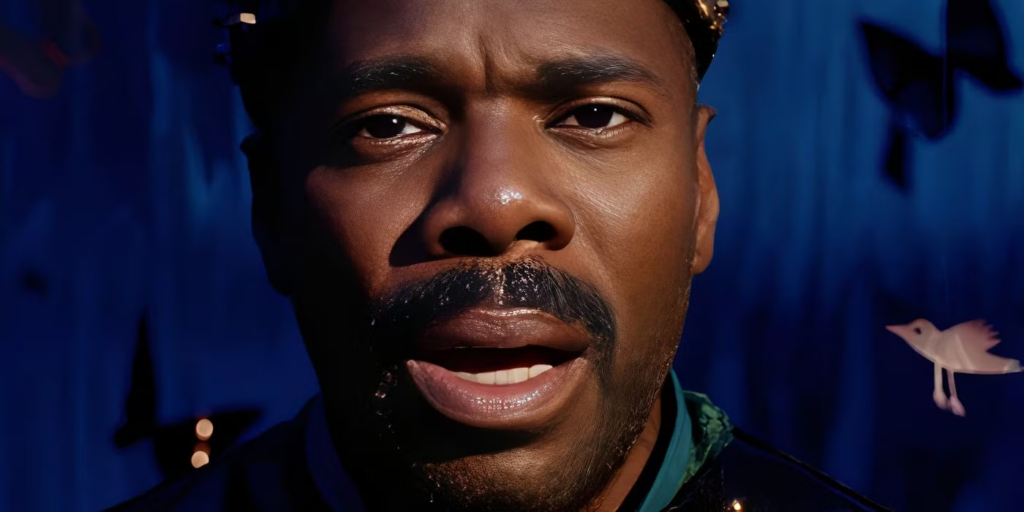
7. Divine G breaks down before a dress rehearsal – Sing Sing
Sing Sing is a film about the beauty of the arts, especially in confinement or under oppressive living conditions, but it is also about the danger of hope. No one other than last season’s acting mogul, Colman Domingo, can showcase that in different shades of a performance. Domingo portrays Divine G, a man unjustly incarcerated for a crime he hasn’t committed with such ease and positivity that makes audiences wonder about the nature of imprisonment, hasn’t the system been able really to lock down his heart and soul? But in subtle scenes, as he extends his hand outside a window to reach the Hudson River, or he tries to get Divine Eye (Clarence Maclin) to cooperate with the theater group, glimpses of his truth come out. Until his parole is denied, his whole world collapses, and Domingo’s performance reaches a crescendo as Divine G breaks down questioning the validity and essence of what they are doing. It is through this particular moment that Domingo shows how hard Divine G has been suppressing his true emotions of rage, disappointment, fear, and nihilism.
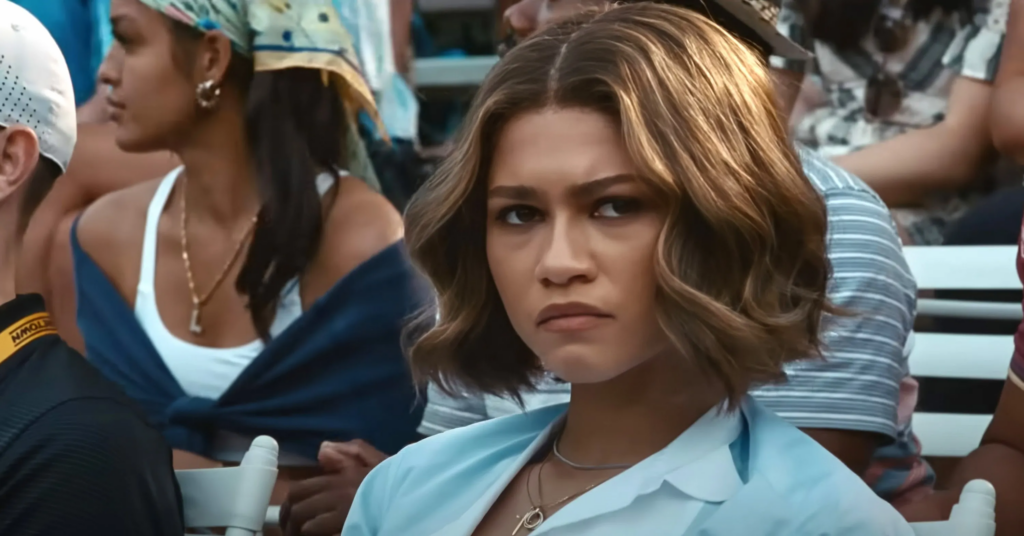
6. Tashi talks about tennis – Challengers
One of last year’s sexiest scenes is about a woman talking about tennis. Wearing a stunning, recycled Loewe dress, Tashi (played wonderfully by Zendaya) dreamily forgets the existence of the two sides of her love triangle Patrick (Josh O’Connor) and Art (Mike Faist), and reminisces about tennis, the ultimate love of her life. Zendaya portrays Tashi in her prime as entirely different from her bitter, rough, power-woman ending. In the beginning, her youth and her brilliance give her an ultimatum, a carelessness only associated with young successful people who think the world is at the palm of their hands. Tashi describes what it feels like to play tennis, a woman possessed by a higher power, a love that outshines anything else in her life, even the two young men she’s coyly flirting with. As they watch her mesmerized, while Trent Reznor and Atticus Ross’s soundtrack plays in the background, one wonders if Art and Patrick in that special moment fell in love with Tashi, with tennis, or with each other after her passionate speech.
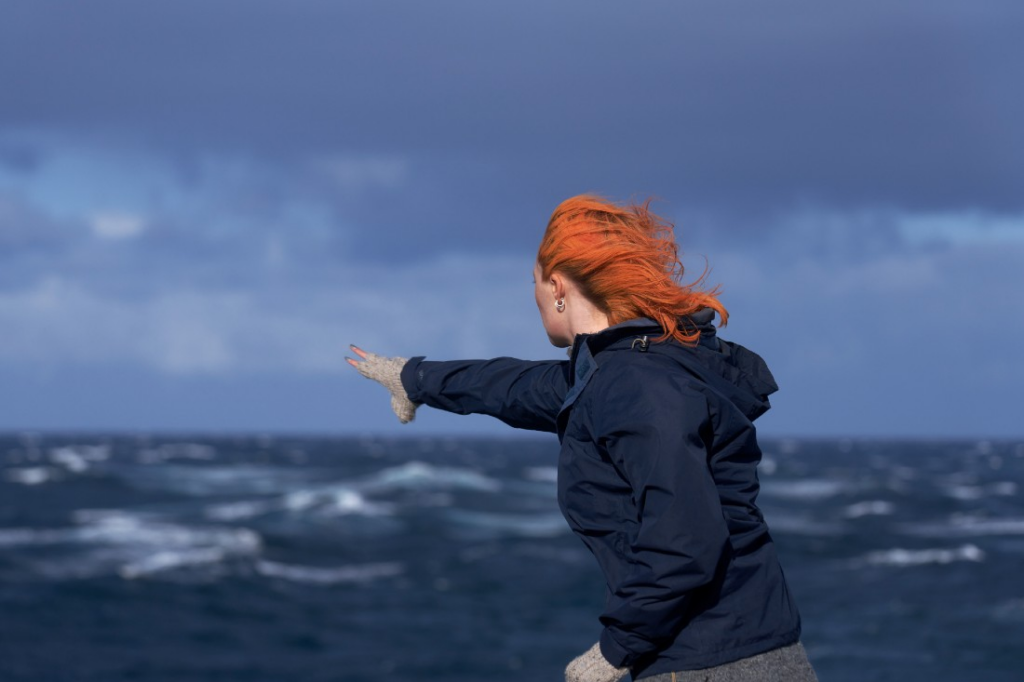
5. Rona dances alone on Christmas – The Outrun
In a conversation with director Nora Fingscheidt, she describes that special moment of Rona (Saoirse Ronan) dancing alone in her house on Christmas, raging against the music, not a sexual, feminine way of dancing, but more of a hip-hop, aggressive way of dancing. Rona attacks the music as she dances, and as Fingscheidt captures her skin in different forms and variations of the cold, the bruised, and the glitter of a night out with a lover, she also captures a thousand kinds of emotion on her face. In that scene, one wonders if Rona will persevere or relapse into her hard-drinking days. No one blames her, alone on Christmas, tough times call for tough measures. But Rona has gone so far off into her healing and sobriety journey that she dances like a wild stallion, crazed and feverish to the trance music. It’s not as if she is dancing alone and we leave her at that, but she’s letting off the steam of her frustration, pain, liberation, loneliness, and release. Saoirse captures that fierce, fight-mode-on physicality in her dancing perfectly and the scene is a stunning crowning to her tumultuous journey.

4. Gabrielle and Louis almost make love in the doll-making factory – The Beast
In this fascinating surrealist drama, Bertrand Bonello creates a Lynchian aesthetically inviting nightmare. Two lovers meet at different intervals of their lives, with their union cut before they make love. Bonello doesn’t reveal what The Beast is throughout, it’s mostly left for interpretation, but the way I see it, The Beast is desire unfulfilled, and love unresolved, hanging in between two people forever tormented by it. Gabrielle’s (Léa Seydoux) lifelong agony is her ability to feel too much, and as she fails one DNA purification process after the other, she aches for that one person she can give in to her craving with, and when she finds Louis (George MacKay), keeps meeting him at different time zones and purgatory-like night clubs, wondering if he’s like her, unable to be reprogrammed and emotionally depleted. In this particular enchanting scene, Gabrielle and Louis meet in the back room of the doll-making factory, they foreplay, caressing each other with such burning passion, but what elevates the scene to a higher level is Seydoux’s sensitive portrayal of Gabrielle, the way she reacts physically and emotionally to every subtle change, every touch from MacKay, and closes her eyes, her face a tapestry of hunger and desire, as the erotic moment turns sadly into a tragedy. The factory is flooded and both doomed lovers die in the process, sending Gabrielle back into the future of robotic emotions.
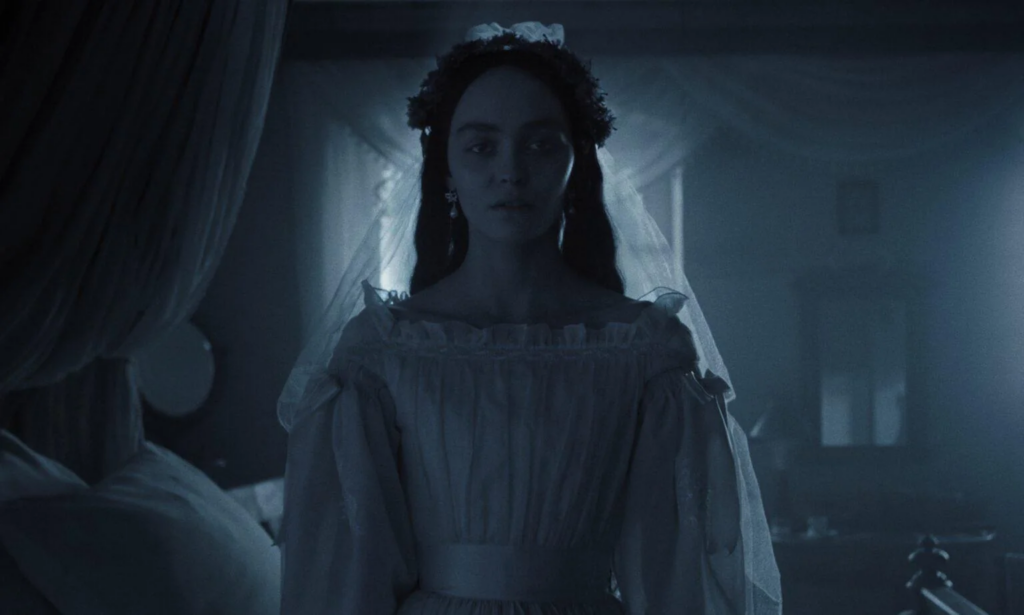
3. Orlok confronts Ellen with her nature – Nosferatu
Taming the wild feminine is a common theme in horror, but in Nosferatu, the tale takes an unexpected turn due to revisionary filmmaker Robert Eggers’s unique handling of the subject matter. Instead of a tale about an old German Count seducing and sucking the blood of a sensitive girl, it becomes a tale of two dark souls aching to be with one another, one who is unwillingly dark due to abuse of her improperly diagnosed mental illness, her huge sexual appetite for the repressive times, and her psychic sensitivity, while the other is a malevolent being, a vampire of the blood and the soul, hungrily stalking her to devour and consume her, eternally in the darkness. Of all Ellen’s (Lily Rose-Depp) scenes, the one where she finally confronts Orlok (Bill Skarsgård) in a somnambulist bout and he reveals her true nature, and how she, in a desperate moment, calls on him to possess her and release her from the prison of an unfulfilled body, of suppressed pleasure, and isolation of the soul. When Orlok appears and faces Ellen with the truth of her soul, and strips bare what she tries to hide even from herself, that willingness to be captivated by his voracious sexual energy that matches hers, Ellen finally realizes it’s not hysteria or melancholia that feeds on her mental and physical health, but the unconsumed lust growing inside her like a chronic disease.
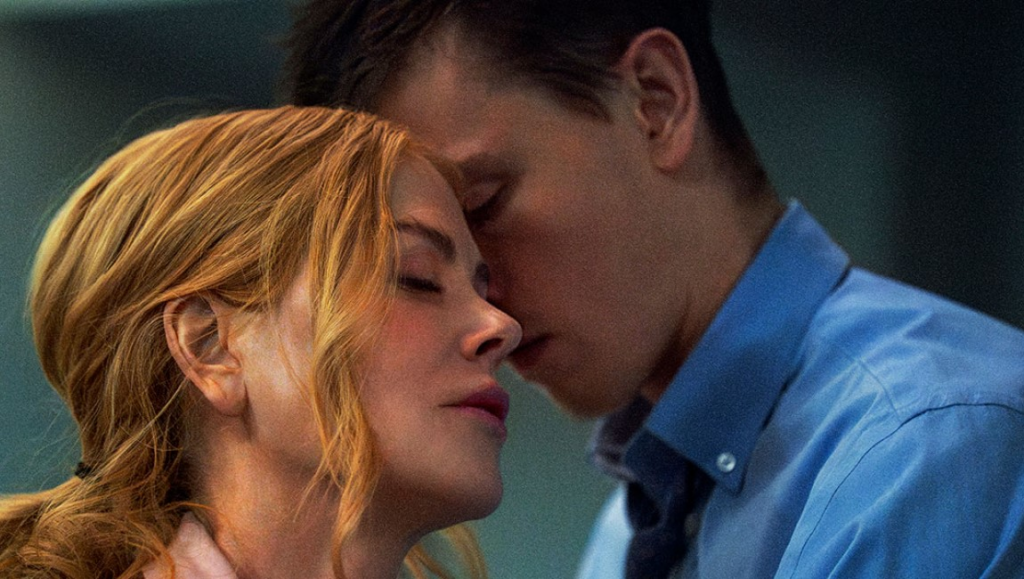
2. Romy gets down on all fours – Babygirl
In this game of cat and mouse, director Halina Reijn returns to familiar territory of desire, power play in a sexual relationship, vulnerability, and unfulfilled lust. Like her previous film, Instinct, it’s all about the shame modern women go through for seeking a submissive sexual relationship with a dominant man. But when Nicole Kidman plays her female protagonist, a sexy, exciting film becomes a work of art. Babygirl sees the dazzling Harris Dickinson as Samuel going out of his comfort zone as a dominant young man, a Gen Z kid seducing an older, sexually unfulfilled woman. But it’s not about him, more about her and what she wants in life. And apparently, all Romy wants is to be conquered, cared for, cuddled, and loved like a child. Romy’s fantasies take her to sleazy motels and underground nightclubs where she lets go of all her restraints from her model home life to her power-woman status as a CEO. With Samuel, she finds that part of her that is tired of keeping it together, of modernity and the restraints of the empowered woman who vies for the Forbes Influential Women list. When she gets on all fours and submits to a sub/dom relationship, crawling to her daddy and looking up at him with docile complicity, the moment is thought-provoking but also sexually liberating and cathartic.

1. Anora breaks down in Igor’s arms – Anora
This tale of Cinderella in reverse is a more realistic rags-to-riches-to-rags commentary on real life. But as Sean Baker brings attention to the lives of showgirls, strippers, and sex workers, he also paints a rollercoaster ride for Ani (Mikey Madison), taking her on a fantastical trip to another dimension where she finds and loses herself in a short-lived brush with a life of luxury and royalty. In the last iconic scene, many viewers have been left puzzled; what does it symbolize? Why did Ani react in the way she did with Igor (Yura Borisov), the only one who felt her pain, and sympathized with her plight? Why seduce him, try to make love to him, attack him, then break down in his embrace? The windshield wipers create an atmospheric ASMR lull of comfort for audiences, as they watch Ani finally put down the brave upfront she’s been bearing ever since her home invasion from Ivan’s (Mark Eydelshteyn) parents’ henchmen. In a moment of truth, the brave working gal allows herself vulnerability and weakness in the arms of her one supporter, true friend, and possible future lover. It’s both beautiful and heartbreaking to see her finally succumb to exhaustion, fear, and confronting the trauma of hopes crushed, and a vulnerable woman terrorized and discarded by a spoiled rich brat. Madison brilliantly takes viewers on the different layers of emotions that her character goes through, and succeeds in doing so.





